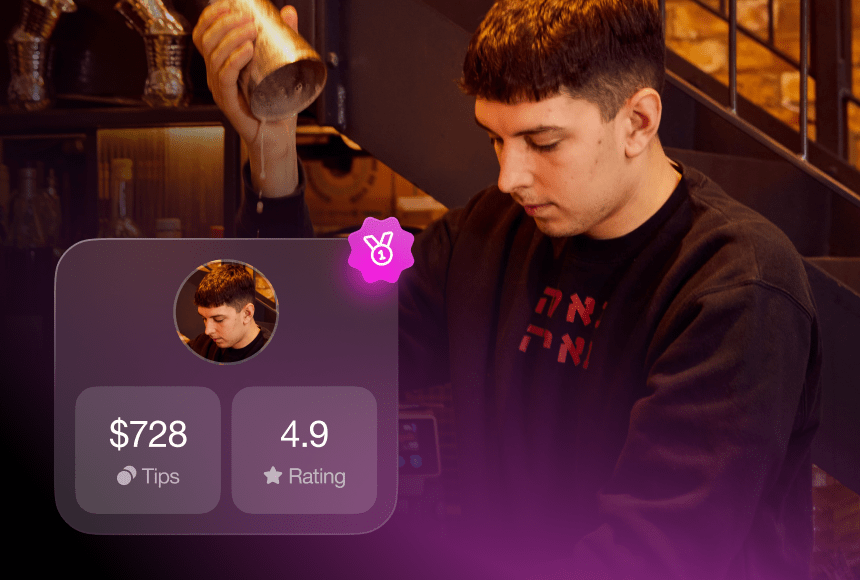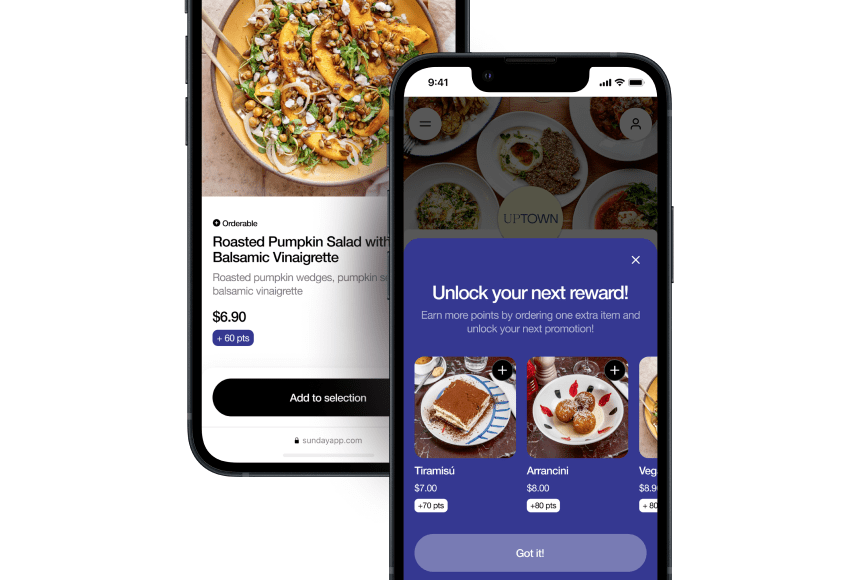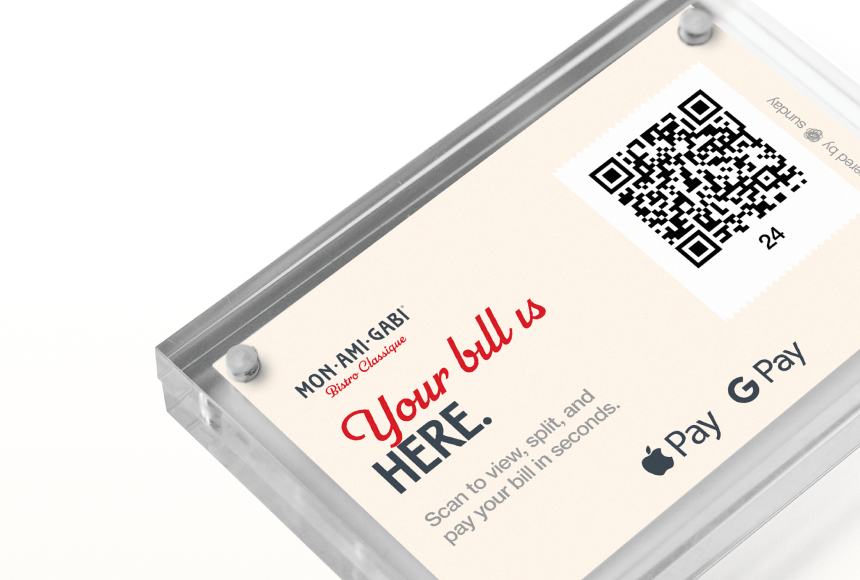
Empowering Your Restaurant Staff for a Better Tomorrow
Why the Future of Restaurant Management Starts with Your People
It’s 2025, and the way we manage restaurant teams has never been more tech-driven. From robust scheduling apps to contactless payment solutions, digital tools are now a core part of daily operations. But if you’ve been in this business for a while, you already know technology itself won’t solve all your challenges. The magic happens when your staff embraces these tools and uses them to excel.
That’s why focusing on team empowerment—rather than just new gadgetry—is crucial. When your servers, hosts, and cooks feel confident navigating modern systems, your entire restaurant runs more smoothly. More efficient checkouts, fewer misunderstandings, better staff motivation: these gains aren’t futuristic fantasies but achievable results, once your digital setup and team are in sync.
Below, we’ll map out key technologies poised to reshape restaurants and show how the real driver of success is how you implement them with your staff in mind. Whether you run a cozy neighborhood café or an expansive chain, these insights apply whenever you’re ready to level up your management game.
1. Streamlining Operations with Smart Scheduling
One of the biggest pain points for managers? Handling shift swaps, last-minute call-outs, and busy-hour coverage. In 2025, there’s no reason to juggle messy spreadsheets or pinned-up schedules. Modern scheduling apps can do more than simply display who works when:
- Automated Shift Suggestions: The software recognizes your lunch rush pattern and suggests an optimal number of servers or cooks. Over time, it learns from your actual sales data, helping you fine-tune future schedules.
- Employee Self-Service: Team members can request swaps or time off directly in the app. You get notifications to approve or deny, sparing you from endless text messages or confusion.
- Better Forecasting: By factoring in local events or last year’s data, scheduling tools help ensure you’re not under- or over-staffed. That’s not just time-saving—it’s cost-saving, too.
When your staff sees that scheduling is fair, flexible, and data-backed, they feel valued and less stressed. The net effect? A more motivated crew that’s prepared for the daily challenges of restaurant life.
2. Enhancing Team Communication with Collaboration Apps
As more restaurants adopt remote or hybrid administrative tasks—like marketing or inventory management done off-site—communication can become fragmented. This is where specialized collaboration apps come in handy:
- Real-Time Updates: Post daily specials or menu changes in a central channel. Everyone—from servers to the back-of-house—stays on the same page.
- Digital Announcements: Need to remind staff about an upcoming deep-clean day or a new promotion? A quick message in a team chat app reaches everyone in seconds.
- Document Sharing: If you want cooks to see a new recipe or servers to study a revised wine list, share files or links. People can review them at their convenience, without drowning in email.
Smooth communication fosters unity and can drastically cut down on daily mishaps. Employees appreciate the clarity, and managers save hours that would otherwise be spent repeating instructions or clarifying misunderstandings.
3. Adopting Modern Payment Solutions for Both Efficiency and Morale
You might think of payment systems solely as a guest-facing element, but they also deeply affect staff performance. If your team struggles with outdated card machines or complicated checkout flows, stress spikes for them—and for patrons.
That’s why forward-thinking managers are turning to solutions like sunday to speed up payment and tip collection:
- One-Tap Checkouts: Diners handle their bill via a QR code on their phone, leaving staff free to seat the next table or handle new orders.
- Tips at a Glance: Clear tip prompts often nudge guests toward slightly higher gratuities. That perks up your servers’ pay, boosting morale and reducing turnover.
- Fewer Billing Errors: When each table finalizes their check on their own device, the chance of staff keying in the wrong amount or forgetting to add an item diminishes significantly.
By eliminating checkout chaos, you not only hasten table turnover and maximize peak hours, but also spare your servers from a tedious chore—making them more available for real hospitality and upselling.
4. Embracing Data Analytics for Team Performance Insights
Data isn’t just for mega-chains with deep pockets. With the right tools, you can track key metrics across your establishment:
- Average Ticket Value: Who’s consistently pushing that appetizer special or dessert add-on? A higher average ticket might mean that server is skilled at upselling.
- Table Turn Times: Which shifts manage to serve more diners? Are you seeing slower checkouts during brunch? Real numbers illuminate training opportunities.
- Tip Percentages: Identify how tips vary by day, time, or server. If certain staff consistently earn above-average tips, they might share best practices with the team.
Armed with these insights, you can celebrate top performers, address staff who may need extra coaching, and adjust scheduling to match your strongest employees with your busiest windows. Everyone wins: servers get recognized, managers see better results, and guests feel well-served.
5. Putting Loyalty Programs into Your Staff’s Hands
Loyalty programs have come a long way from punch cards. Modern solutions track points through digital profiles, offering personalized rewards or push notifications. How does this help your team?
- Upsell Opportunities: When staff see a returning guest’s preferences or reward status, they can suggest an appetizer the diner loved last time, or remind them how close they are to earning a discount.
- Fewer Surprises at Checkout: If points or vouchers apply automatically, there’s less room for confusion about whether a discount is valid. Staff can finalize payment in a snap.
- Guest Satisfaction: A well-run loyalty program transforms casual visitors into repeat patrons. The more repeat guests you have, the more predictable and stable your revenue—and the easier it is to plan staff schedules accordingly.
Give your team quick access to loyalty data, so they can greet regulars by name or offer a relevant perk. Personal touches like these elevate the dining experience and help foster a warm, bustling atmosphere.
6. Automating Inventory and Supply Management
Staff performance goes beyond the dining room. If you want a cohesive, frictionless operation, your kitchen and bar teams need real-time insights into stock levels. That’s where digital inventory systems step in:
- Live Ingredient Tracking: As servers ring up the day’s orders, the system updates ingredient counts. No more surprise “We’re out of shrimp” moments halfway through dinner service.
- Par Level Alerts: Automatic warnings tell you when it’s time to reorder key items, letting managers plan deliveries efficiently. Less running out for emergency groceries, more time devoted to training staff or greeting guests.
When supply is steady and transparent, tensions drop. Your cooks don’t scramble to improvise missing ingredients, your servers don’t apologize to disappointed diners, and your managers can breathe a bit easier. Everyone’s performance improves in a stable environment.
7. Using Task and To-Do Apps for Coordinated Shifts
Ever tried to coordinate a deep clean or a large catering order just by word of mouth? Miscommunication can pop up quickly. That’s where digital task apps come in handy:
- Assigned Responsibilities: “Clean grill after lunch rush” or “Check stock of to-go containers” can be assigned to specific staff, with deadlines. Each person checks off tasks in the app, so everyone sees what’s done.
- Recurring Tasks: Set daily or weekly routines—like sanitizing surfaces or rotating produce stock. The app automatically reminds the assigned team member. Less chance to forget the basics.
By clarifying who handles what, staff can spend less time wondering whose job it is to restock napkins or finalize the lunch specials sign. That unity fosters a sense of ownership, which often boosts performance.
8. Cultivating a Feedback-Driven Environment
Managing a team in 2025 means going beyond top-down commands. Modern employees often crave real-time feedback, especially from guests. But how do you facilitate that?
- Collecting Reviews Instantly: Digital checkout solutions like sunday can prompt diners to leave quick feedback after they pay. If a certain server consistently receives five-star remarks, that’s valuable recognition—perfect for staff motivation.
- Manager Dashboards: Some systems allow you to gather staff performance data, from tip percentages to average table turn times. Review these metrics in your weekly or monthly staff meetings to highlight what’s going well and where you can improve.
When staff see that constructive feedback leads to tangible changes—like adjusting menu layout or refining a process—they’ll feel engaged and valued. That mindset is crucial for thriving in an evolving digital environment.
9. Reducing Stress and Burnout Through Smarter Tools
Burnout is a real threat in the fast-paced restaurant industry. If your team constantly battles clunky tech, complicated checkout flows, or minimal break times, morale suffers. The right digital tools can mitigate these stressors by:
- Automating Mundane Tasks: Whether it’s automatic tip distribution or integrated promotions, less manual effort means staff can focus on actual customer interactions.
- Providing Real-Time Alerts: Let staff know the moment an online reservation cancels or the kitchen hits a supply snag. Fewer last-minute crises lead to calmer shifts.
- Encouraging Self-Service Scheduling: Employees can request time off or switch shifts in an app, giving them a sense of control over their work-life balance, thus reducing dissatisfaction.
A calmer environment fosters better service, higher job satisfaction, and—ultimately—a stronger bottom line for your restaurant.
A Glimpse into the Future of Restaurant Team Management
Looking ahead, “managing your team” goes hand in hand with adopting technology that liberates them from tedious tasks. Freed from archaic receipt printing or guesswork scheduling, employees become your brand ambassadors—greeting diners with real warmth, upselling your signature dishes, and moving swiftly through busy periods.
In 2025, the best-run restaurants will be those that integrate digital solutions thoughtfully, always with the people behind the technology in mind. Tools like advanced scheduling apps, streamlined payments from sunday, and data-driven analytics are no longer optional add-ons. They’re essential for competing in a landscape where efficiency and guest satisfaction determine who flourishes and who falls behind.
Moving Forward Together
If you’re ready to elevate your restaurant, focus on picking digital tools that serve both your diners and your staff. Yes, you want faster service and higher sales, but the real magic lies in how your team uses these tools: scanning QR codes for quick payments, harnessing loyalty data for targeted up-sells, or rapidly adjusting schedules based on actual traffic.
As you adopt new platforms, involve your staff from the start. Walk them through each feature, invite their feedback, and celebrate small wins—like a server who masters the new system and sees a bump in their tips. Over time, you’ll forge a culture of adaptability and collaboration, turning technology into a catalyst rather than a challenge.
Remember, the tools alone don’t guarantee success. What matters is how people engage with them. Manage your team in 2025 by offering the right digital arsenal—and then watch as your restaurant transforms into an agile, guest-focused environment where servers, cooks, and managers all thrive, day after day.
Find out more today
Drop us your details below and we’ll reach out within the next 24h
Get the full, detailed picture.
sunday elevates your business with insightful data, instant feedback and precise analytics.




